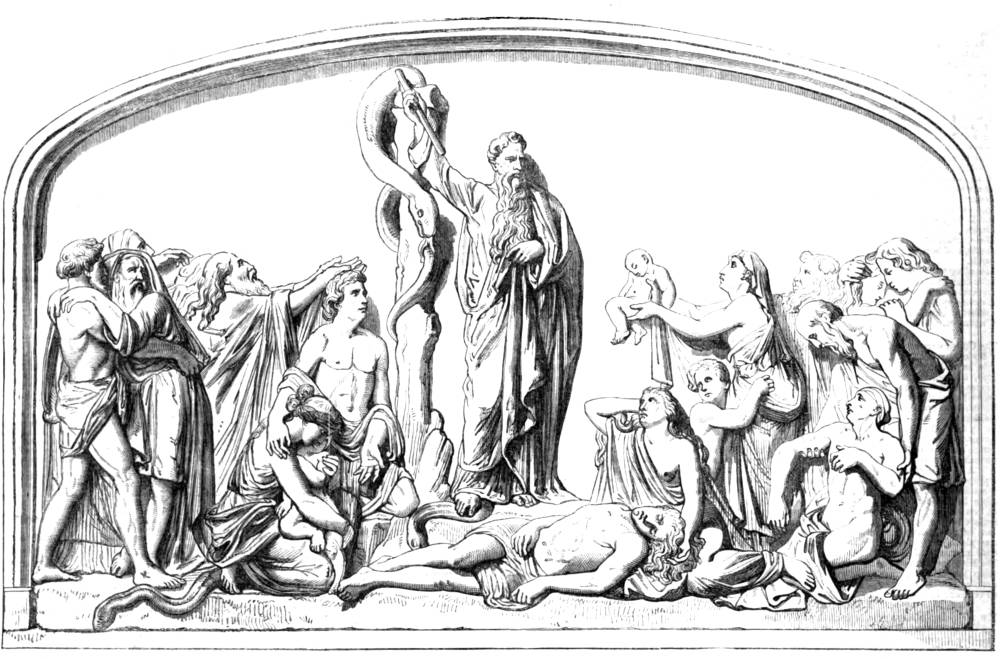The Book of Numbers relates that after the Lord sent a plague of serpents to punish the Jews for their lack of faith, Moses interceded with God and was instructed:
Make thee a fiery serpent, and set it upon a pole: and it shall come to pass, that every one that is bitten, when he looketh upon it, shall live" (Numbers 21:8).
John 3:14, in which Christ proclaims "And as Moses lifted up the serpent in the wildemess, even so must the Son of man be lifted up," taught Christians to see the brazen serpent as a divinely authenticated type of the Crucifixion, but commentators also emphasize that it is an image of saving faith. According to the usual reading of this type, the brazen serpent in the wilderness, which God gave to the people when they repented of their lack of faith, teaches man that he can be saved only by faith in Christ crucified.


Two depictions of the brazen serpent, that on the left by Gustave Doré and the one on the right by William Butterfield. Click on the images to enlarge them.
Commentators like Thomas Scott emphasize that the brazen serpent is an image of saving faith precisely because the actions commanded by God were themselves so apparently unlikely to produce any beneficial result, and, similarly, without the eye of faith one would hardly think that salvation could conceivably come from gazing with belief at some person suffering painful execution. The commentators also remark that Moses set up the brass image upon a pole in the midst of the Israelite camp, like a standard.

The Brazen Serpent by P. Ball. From “Royal Academy Prize Designs,” Illustrated London News 48 (January 1848): 28, Click on image to enlarge it.
Examples of this type in Victorian Literature and Art
- Robert Anning Bell's book illustration
- On the frame of Holman Hunt's The Shadow of Death
- In Holman Hunt's Melchizedek
- Carlyle uses it satirically in The French Revolution and Hudson's Statue
- George Hedgeland's Stained Glass in Jesus College, Oxford
- Gustave Doré's Bible Illustration
- Mosaic panel in William Butterfield's Keble College Chapel, Oxford
References
Landow, George P. Victorian Types, Victorian Shadows: Biblical Typology in Victorian Literature, Art, and Thought. London: Routledge & Kegan Paul, 1980. [Reprinted 2015]
Last modified 29 December 2015
